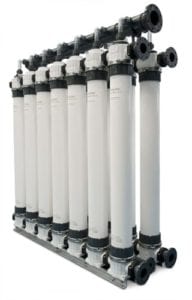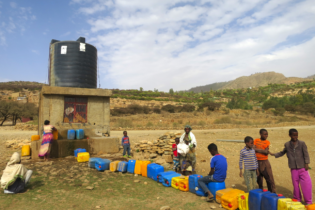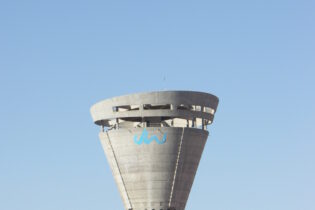“Ultrafiltration is an emerging technology in this region, but there has been significant growth over the past few years,” Susan Cole, regional commercial manager: sub-Saharan Africa at Dow Water and Process Solutions, tells Chantelle van Schalkwyk.
According to Cole, this growth indicates a definite willingness on the part of the water treatment sector to adopt the technology as a cost-effective and viable treatment technology in the Southern African and sub-Saharan Africa regions. Pre-treatment – be it the conventional methods or via ultrafiltration – is essential in ensuring optimal system performance, especially relating to the fast-growing industry adoption of ultrafiltration for reverse osmosis (RO) pretreatment, with most causes of failure of RO systems due to deficient pretreatment. Simply put, Cole explains that ultrafiltration is a membrane process based on size exclusion (physical sieving). It rejects particles, colloids, suspended solids, oxidized iron (Fe)/manganese (Mn) and micro-organisms. “The uptake has been as good as it is because Ultrafiltration technology presents a very effective solution to some of our regional water treatment issues,” she says. The reasons for this are both varied and multiple, but most importantly, says Cole, ultrafiltration is more cost effective than the older, more conventional treatment technologies South Africa is currently using and it is also able to supply consistent, superior water quality compared to conventional sand filtration in potable water treatment. Stringent standards Increasingly more stringent drinking water regulations around the world are placing added pressure on water utilities and service providers to up their game. Ultrafiltration can provide water virtually free of pathogens and turbidity, according to research, and as industry experience with it increases, the water industry globally is gradually gaining confidence in ultrafiltration. “The SANS 241 specification for potable water specifies microbial limits for certain microbes. Ultrafiltration is a separation/barrier technology and, over and above excellent suspended solids removal, it can effectively remove bacteria and viruses, including Cryptosporidium and Giardia cysts,” says Cole, adding that sand filtration cannot do this consistently or effectively. Removal of micro-organisms upfront of the final disinfection step in potable water treatment can also possibly reduce the dosage of disinfectant required to reach the SANS 241 disinfection residuals specification. “Besides this very useful performance characteristic, ultrafiltration is also a very good technology for wastewater reuse, a hot topic in South Africa right now,” she says. The ‘greener’ solution? The increased uptake of ultrafiltration is also in line with the increased global focus on energy efficiency and reductions in carbon footprints. “Dow Water and Process Solutions (DW&PS) components are known to be the most durable and longest-lasting in the industry, reducing raw material and natural resource use. When DW&PS’ components are installed in water treatment systems, they reliably produce water that meets defined water purity requirements longer, reducing waste, disposal and associated economic and environmental costs,” explains Cole. Additionally, she adds that DW&PS contributes to sustainable industrial progress by integrating various technologies in a way that can increase the operating efficiency of any single facility while reducing its environmental impact. “With specific reference to the Dow Ultrafiltration range, ultrafiltration has a smaller footprint than conventional technologies as it is a single-stage process and no large civil construction is needed. There is lower chemical use with ultrafiltration, for example, coagulant and pH adjustment, and maintenance is easier as ultrafiltration operation can be automated.” Challenging conditions The question, however, when introducing new technology into the local South African – or even African – markets, is whether it is suited to local conditions and challenges. “DW&PS’s pressurised hollow fibre ultrafiltration products are the ‘outside-in’ type filtration and the hollow fibres are made of hydrophilic PVDF, a very robust fibre capable of withstanding many different harsh conditions without any degradation of the fibre itself,” says Cole.She adds that apart from its apparent robustness, another benefit is its ‘cleanability’, which uses a simple air scour, drain and backwash. “For more challenging waters/effluents, however, utilisation of a chemically enhanced backwash and clean in place, over a wide pH range of 1-12, is possible to restore membrane performance.”
According to Cole, the Dow h-PVDF hollow fibre ultrafiltration can also handle high turbidities of up to 300 NTU directly onto the module with only a 150 micron screen filter upfront of the ultrafiltration module. “We have examples of local Dow ultrafiltration plants operating in harsh environments with great success. Difficult effluents we have successfully treated with Dow ultrafiltration so far include brewery waste water, textile effluents as well as coal mine water.” There are also additional advantages for an outside-in flow configuration relating to operational efficiency, with operators able to have maximum uptime, versus shutting down more frequently to backwash. “This translates directly into savings on chemicals and electricity usage.” Operation & Installation Ultrafiltration plants are usually designed and built by engineering firms and original equipment manufacturers. This means that installation is relatively simple and, according to Cole, can be made even simpler by utilising pre-engineered solutions such as the DOW IntegraPac™ skid products. “The DOW IntegraPac™is a ready-to-assemble, compact skid solution that delivers Dow’s proven ultrafiltration technology, while simplifying engineering and lowering skid costs. The product is supplied with the IntegraPac™ ultrafiltration modules, auxiliary parts and piping. All that needs to be added are the pumps, valves and any additional pipework needed beyond the skid itself. A six-module skid should take two people about two hours to assemble.” Operation is also relatively simple, says Cole, and can be automated for further ease of operation. Size matters As municipalities continue to grow, space is increasingly at a premium. This means solutions need to be both smaller in footprint, while increasing in productivity and capacity. “The product is modular so one just adds as many modules as required to reach the desired clean water (filtrate) flow rate so the options for design are endless,” says Cole, adding that DW&PS has a range of ultrafiltration modules capable of supplying from the smallest capacity of about 2 m3/h per module (33 m2 filtration surface area) to the largest of about 12 m3/h per module. (77 m2 filtration surface area). She adds that the organisation’s latest offering – the DOW IntegraFlo™ IW102 1100 ultrafiltration module – has 102.5 m2 filtration surface area, “which is an increase of >30% versus our previously largest module with 77 m2 filtration surface area”. Dow was recently awarded a contract to supply ultrafiltration modules for a ultrafiltration potable water treatment plant in Baku, Azerbaijan. “This will be the largest ultrafiltration installation in the world, with a capacity of 520 Mℓ/d per day,” says Cole. An attractive option An in-depth cost comparison has not been done locally by Dow, according to Cole, but feedback from various local sources’ independent analyses shows that ultrafiltration is definitely viable from a cost point of view compared to conventional sand filtration. It is therefore on a par with conventional media pre-treatment options such as the use of gravity filters and pressure filters, and the use of two-stage pressure filters, “and the positive additional benefits ultrafiltration offers make treatment using ultrafiltration technology an attractive option. “The results speak for themselves,” she concludes.







